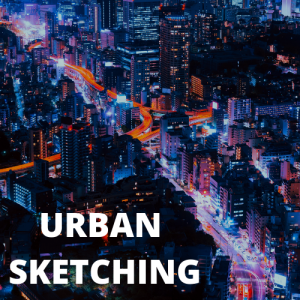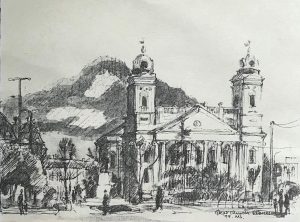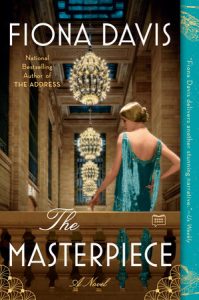 What is this Urban Sketching Project at Rutgers? Why should you consider giving it a shot?
What is this Urban Sketching Project at Rutgers? Why should you consider giving it a shot?
As kids raised to become well-rounded adults, we had probably tried them all: arts and music, foreign languages and sports. Some of them would stick, some brought tears and disappointments. Some of us have become proficient in one or more pursuit; others swore not to touch a violin, a paintbrush, or tennis racket ever.
What all of us might have missed is the fun part. Advancing in one’s career comes with commitments and deadlines: the longer we spend in some area, the more difficult it becomes to remember fun, whatever that concept means to us. In the highly competitive world of ours we tend to drop activities in which we do not excel. There goes the work-life balance.
Enter fine arts. I am fully aware that what I’ll sketch will not be displayed in the Met. Nor will my productions make big bucks on Etsy. My former art teacher and former running coach/art teacher would be mortified to find out that I am thinking about reaching out for a pencil. Here is why I still want to give it a shot.
Sketch to distract: doodle to relieve stress
 Collecting books for the Reading for Recovery (R4R) project to help people with substance use issues, the team had to read some difficult texts during difficult times. We all developed strategies of our own to handle accumulating stress: someone kept piling up more books to read, I turned to writing, and one member was constantly doodling.
Collecting books for the Reading for Recovery (R4R) project to help people with substance use issues, the team had to read some difficult texts during difficult times. We all developed strategies of our own to handle accumulating stress: someone kept piling up more books to read, I turned to writing, and one member was constantly doodling.
Her sketches have become the illustration of the project web site and my book of short stories written during this period.
Sketch to cherish: keepsakes that age well
An ESL teacher colleague from the UK created insightful sketches of the Reformed Church of our hometown while working at the Medical School. At the end of her tenure, she gave us a copy each. After 20+ years and moving continents, I still look at the sketch fondly every time I walk by it, framed on the wall in the living room.
Sketch to connect: track down the artist
 One sketch closer to books and me is actually a bookplate created by a professor of research documentation at the Center of Alcohol Studies. Artist unknown, one could say –– unless, by going back to the roots here at the birthplace of alcohol studies, one has the chance to dig in archives to find documents with doodles on them, signed or initialed. Lo and behold, there is the proof that the infamous bookplate of E. M. Jellinek (and the big-headed Jellinek caricature) was created by Vera Efron, who was running the indexing and abstracting services at the Center of Alcohol Studies at Yale and Rutgers –– a true genius with multiple talents.
One sketch closer to books and me is actually a bookplate created by a professor of research documentation at the Center of Alcohol Studies. Artist unknown, one could say –– unless, by going back to the roots here at the birthplace of alcohol studies, one has the chance to dig in archives to find documents with doodles on them, signed or initialed. Lo and behold, there is the proof that the infamous bookplate of E. M. Jellinek (and the big-headed Jellinek caricature) was created by Vera Efron, who was running the indexing and abstracting services at the Center of Alcohol Studies at Yale and Rutgers –– a true genius with multiple talents.
Read to sketch: books and their covers
Finally, no post of Books We Read should be published without at least one book recommendation. In addition to a collection of book covers with sketches only, a captivating historical fiction entitled Masterpiece by Fiona Davies introduces us to the lost world of a small artist community in the early twentieth century. Two different women related to the Grand Central Terminal in New York City in two different time periods meet through the intricate plot as we also learn about how photography affected artists, such as magazine illustrators, often putting them out of work and causing crises motivation.
No Picasso here either. Not everyone will perform in Carnegie Hall or compete in the Olympics. But playing the keyboard with your headphones on is still fun, and so is running, rain or shine. Learning a foreign language will open up a whole new world: reading original works instead of translations.
Here is another one: grabbing a pencil and opening our eyes to our surroundings may bring some unexpected amusement –– like how clumsy I am, after all those years of drawing lessons!
Let’s try Urban Sketching in November.
